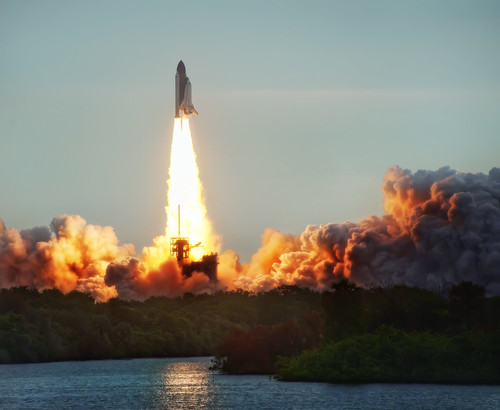In our last unit most of the inquiry was guided. In our new unit we decided that we would give more freedom to students earlier in the unit.
This is an environmental unit. It's new for us this year, although we had a similar one about Climate Change last year. We had a new compelling question, "How long could we live without bees." We asked students what they thought about this question. We used Padlets. This is my class's Padlet. (It's a great way to gather short thoughts and ideas.)
We shared a LiveBinder about Bees with videos that gave more of an insight into why we picked bees as a provocation and started students thinking about what the unit would actually be about. Interestingly almost all my class thought it was something to do with us not being able to live without honey...
We then looked at environmental posters produced by the World Wildlife Fund and eveyone had a go at the See-Think-Wonder thinking strategy we have learned. We talked about the various issues that we could identify and started the task which this post is actually about!
The task was to choose an issue they found interesting and choose some wondering to research. And after two days they could share what they found out. I wanted to find out how they would go about this without my guiding step by step. I said not to worry too much about presenting the information as I wasn't giving a lot of time and I really wanted to see how they could research...
 |
Corbineau Antoine & Mogarra Laurie, France, http://posters.panda.org/media/poster/26_grd.jpg |
The task was to choose an issue they found interesting and choose some wondering to research. And after two days they could share what they found out. I wanted to find out how they would go about this without my guiding step by step. I said not to worry too much about presenting the information as I wasn't giving a lot of time and I really wanted to see how they could research...
But I knew they were so excited they weren't actually listening....
With our 1:1 laptop programme in its second year, I wanted to make sure that THIS year, students put better effort into the research part and not worry so much about the presentation part. I had noticed in the last few years that with the increasing use of technology there has been a danger of focusing way too much time on a Prezi/PowerPoint/Keynote/Google presentation/movie, etc. which is AMAZING looking... but doesn't actually show much learning.... I don't want that to be the case this year.
I don't want to be continually directing the inquiries all year. I feel that students need to be doing this for themselves. But to be able to do this, they need to see for themselves how well they are managing different aspects of the inquiry.
The tool I decided to use to help this reflection was google forms. I named it Researching. Some questions I asked had paragraph answers. Some had multiple choice and some had checkboxes.
In case you can't access the form.... This is what was emailed to students.
Here there's a paragraph space for the answer...
Paragraph answer...
Paragraph answer....
As
the surveys are done, the results appear on a spreadsheet. My class had
clearly thought about the questions and answered honestly. I hoped that the series of questions would direct the reflection so that the last question would indicate some action or goals.
Last Question: If you were doing this again, what would you do differently?
- I would try to research more information and try to find more information that I did not know
- I would use more websites and/or books.
- I would like to get more information.
- Find more websites.
- I would use some different websites to find my information
- Do more researching.
- I would research more.
- I would have a harder question because the question I picked was a bit easy for me.
- I would make my question not so wide so that it doesn't take a lot of time to research about it.
- I will use key words when I search because it will make the research part faster.
- I think I would not spend so long on BrainPop because it didn't give me that much information that I needed.
- I would spend a little more time researching.
Did the exercise work? We shall see in a couple of weeks as the inquiry focuses on food chains...




























